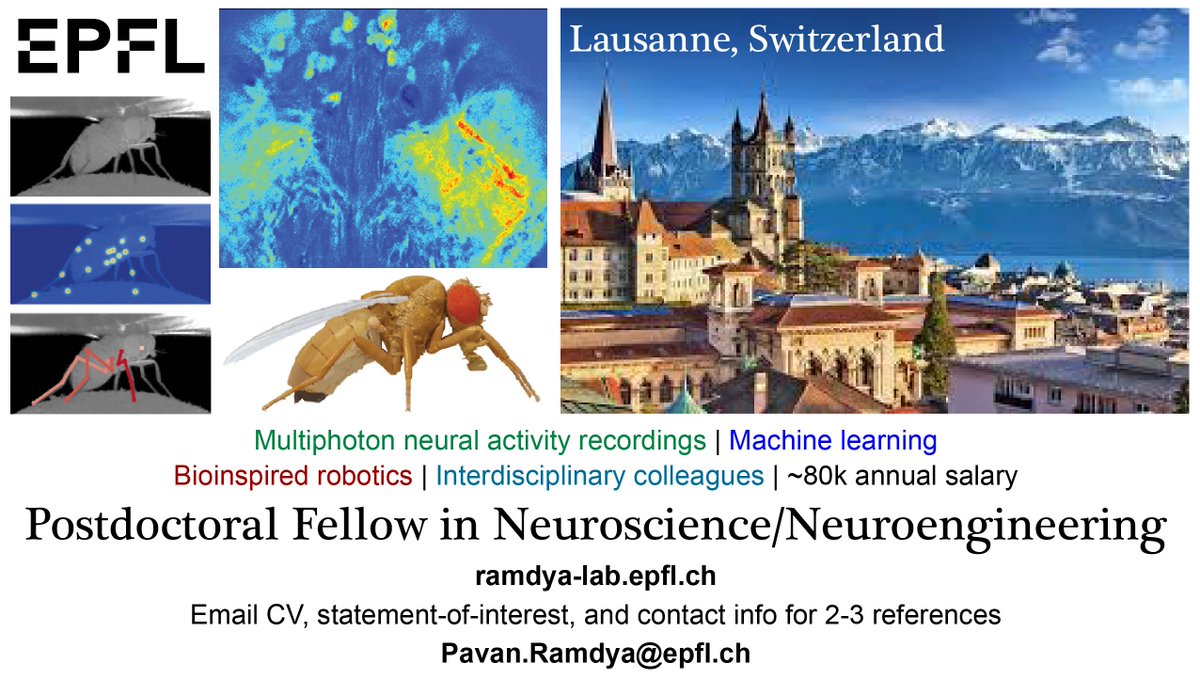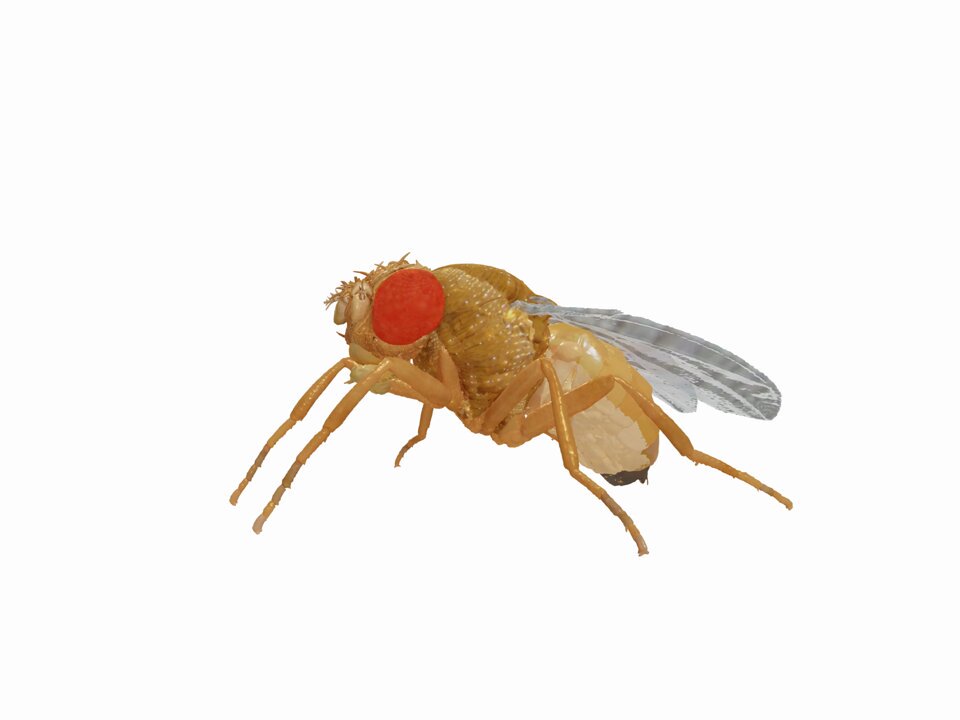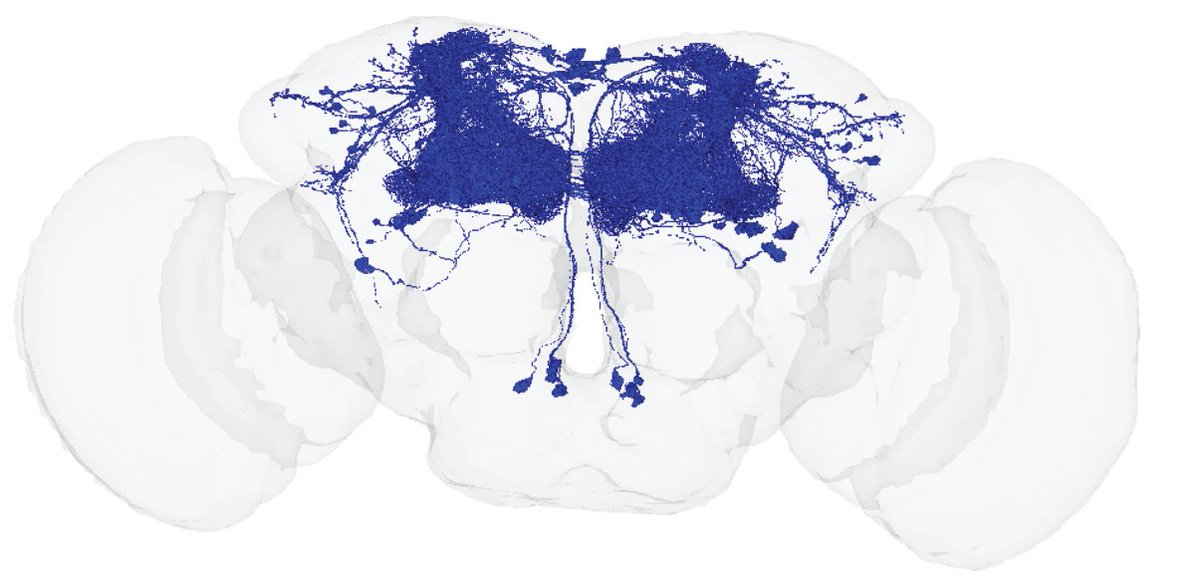
Pavan Ramdya
@ramdya
Followers
2K
Following
2K
Media
193
Statuses
4K
Professor of Neuroscience & Bioengineering, EPFL @EPFL_en, reverse-engineering flies to build better robots, previously @Harvard, @UNIL, @Caltech @ramdya.bsky.s
Lausanne, Switzerland
Joined March 2009
RT @ERC_Research: “Science has no passport, no gender, no ethnicity, no political party”. President @vonderleyen, with a new €500M initiati….
0
197
0
RT @eara_ch: Au Laboratoire de neuro-ingénierie de l’@EPFL, l’équipe de Pavan @ramdya travaille à recréer le cerveau de la #drosophila mel….
0
1
0
RT @GraeffJohannes: We are looking for a new PhD student to join our lab of Neuroepigenetics at EPFL! Interested in deciphering the epigene….
0
78
0
RT @SulianaManley: I’m excited to visit @UCBerkeley this fall as a Visiting Miller Professor. Looking forward to soaking up the great scien….
0
2
0
My TEDx talk just came out!. “How flies can help us build better robots and AI”. Thanks again to the fantastic organizers @TEDxArendal . Special thanks to the people in my laboratory at EPFL past and present without whom none of this would be possible.
0
14
38
RT @flygirlPhD: Job Alert: @KavliFoundation is hiring! We're looking for an associate program officer in the science team, with expertise i….
0
6
0
RT @carmensandi10: We are hiring!.Postdoc position in Data Science in Neuroscience in our lab @EPFL_en Cutting-edge research analyzing rich….
0
48
0
RT @GraeffJohannes: Interested in the #genetic, #epigenetic and #transcriptional processes in neurodevelopment and brain disorders? Come jo….
0
2
0
RT @EpiGN_Lab: 🚨 Save the Date! 🚨.Join us for the BMI Symposium: Neuromics in Development & Disease at EPFL, June 24-25, 2025! 🌟.🧠 Explore….
0
7
0
This is a really heroic experiment recording associative learning neurons in the fly brain over two hours while two flies interact with one another. This device and this approach can generally enable many more kinds of social interaction experiments.
We recorded the activity of neurons within this network during 2 hours of social interactions. Interestingly, as the animals became more sociable the baseline and locomotor-related activity greatly diminished in MBONs previously implicated in aversive learning.
0
3
24
I found @VLobatoRios's experiment with a fly and a beetle really clever. It tests whether, when flies becoming sociable towards one another, it is due to a general reduction in behavioral excitability or if it is specific to conspecific (same-species) interactions.
However, single-housed animals can learn to be sociable after spending several hours with other flies, or more specifically, smelling other flies. Importantly, this shift in behavior seems to be tuned to conspecifics since flies never stop evading beetles, for example.
0
0
1
When @VLobatoRios first showed me videos like the one the left, with one female fly running way from the other female fly, I was stunned.
We found that if we isolate flies before they eclose, and keep them living alone, they’ll display a constellation of fearful reactions the first time they encounter other flies. Contrary to the sociable behaviors shown by flies housed in a group.
0
0
4
Watching these animals touch one another reveals just how rich inter-fly social interactions are. @VLobatoRios designed a novel two-photon microscopy recording system that allows us to record one fly's brain while it interacts with another fly.
I'm thrilled to share this story! Flies tend to aggregate, as I’m sure you have experienced in your kitchen. They lay eggs around the same places and form clusters even in the absence of food. But, what happens when they meet other flies for the first time? .
1
1
14
Being raised alone makes flies afraid of one another! .But exposure to other flies makes them become sociable. @VLobatoRios found and recorded specific learning circuits in the brain that regulate this transition. Read more in our new preprint: .
2
9
53






